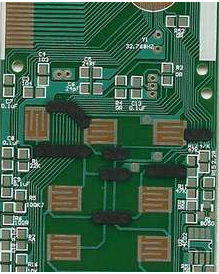The inspection before SMT chip processing is the first condition to ensure the quality of the chip. The quality of electronic components, printed circuit boards, and smt chip materials directly affect the quality of the PCB board. Therefore, the electrical performance parameters of electronic components and the solderability of soldering tips and pins, the productivity design of printed circuit boards and the solderability of pads, solder paste, patch glue, rod-shaped solder, flux, cleaning The quality of smt patch materials such as agents must have strict incoming inspection and management systems. The quality problems of electronic components, printed circuit boards, and smt patch materials are difficult or even impossible to solve in the subsequent process.
Inspection of smt patch electronic components:
The main inspection items of electronic components include: solderability, pin coplanarity and usability, which should be sampled by the inspection department. For testing the solderability of electronic components, stainless steel tweezers can hold the electronic component body and immerse it in a tin pot at 235±5 degree Celsius or 230±5 degree Celsius, and take it out at 2±0.2s or 3±0.5s. Check the soldering end of the solder under a 20 times microscope, and it is required that more than 90% of the soldering end of the electronic component is soldered.

The patch processing workshop can do the following visual inspections:
1. Visually or with a magnifying glass, check whether the solder ends or pin surfaces of electronic components are oxidized or have no contaminants.
2. The nominal value, specification, model, accuracy, and external dimensions of electronic components should be consistent with the product process requirements.
3. The pins of SOT and SOIC cannot be deformed. For multi-wire QFP devices with a wire spacing of less than 0.65mm, the coplanarity of the pins should be less than 0.1mm (which can be optically detected by the placement machine).
4. For products that require cleaning, the marks of electronic components will not fall off after cleaning, and will not affect the performance and reliability of electronic components (visual inspection after cleaning).
What are the methods for SMT placement machines to mount double-sided circuit boards?
As the current circuit boards are becoming more and more multifunctional and more integrated, double-sided mounting circuit boards have been widely used, and the end products produced are getting smaller and smarter. A small PCB circuit board is full of electronic components with various functions, so it is necessary to make full use of the A and B sides of the circuit board.
After the components are mounted on the A side of the circuit board, the components on the B side need to be printed again. Then at this time, side A and side B will be reversed. The top one will now be flipped to the bottom, and the bottom one will be flipped to the top. This flip is only the first step. What's more troublesome is that SMT reflow soldering must be performed again, because some components, especially BGA, are very harsh for soldering temperature. If the solder paste is heated and melted during the second reflow soldering and there are heavier parts on the bottom surface (the first side), at this time, the device may fall or shift due to its own weight and the melting and loosening of the solder paste. The quality is abnormal, so in the process control of PCBA processing, we will choose to reflow soldering during the second soldering when soldering heavier components.
What are the methods for SMT placement machines to mount double-sided circuit boards?
In addition, when there are many BGA and IC components on a circuit board, because some dropouts and solder reflow problems must be eliminated, important components will be placed on the second side to make parts, so that it can be completed by only one reflow oven. good. For other components with fine pins, for the fineness of the alignment requirements, if this device can be mounted on the first side when the DFM permits, it will be more effective than mounting on the second side. The precision control is better. Because when the PCB circuit board is in the first reflow oven, under the influence of high temperature soldering, bending and deformation that are invisible to the naked eye but affect the soldering of some tiny pins will occur. At the same time, the problem is that it will cause a slight offset in the solder paste printing, and the amount of the second solder paste is difficult to control.
The above are the methods for SMT placement machines to mount double-sided circuit boards. Of course, there are some components that do not participate in the selection of side A and side B due to the influence of the manufacturing process. Choosing the one that has the least impact on the process can optimize the quality of welding.